By now, nearly everyone who cares about such things has seen photos and/or videos of the Arkansas State Police, at the command of Governor Asa Hutchinson, firing tear gas, shooting PepperBall rounds, and using their Long Range Acoustical Device (LRAD) against people protesting the death of George Floyd. According to the Governor, even the firing of tear gas at protesters who are kneeling and pose no threat to anyone is acceptable when someone–regardless of whether they are in the group being gassed–allegedly broke into a building prior to the gassing.
As all of this has unfolded, I started to wonder whether the Arkansas State Police were at least acting in a manner consistent with state law and their own policies and procedures. The short answer to that is a resounding no.
Sworn law-enforcement officers employed by the ASP are governed by state and federal law as well as by the “Revised Policy and Procedures Manual for the Department of Arkansas State Police” (the Manual). The Manual has a section on Use of Force, wherein it states:
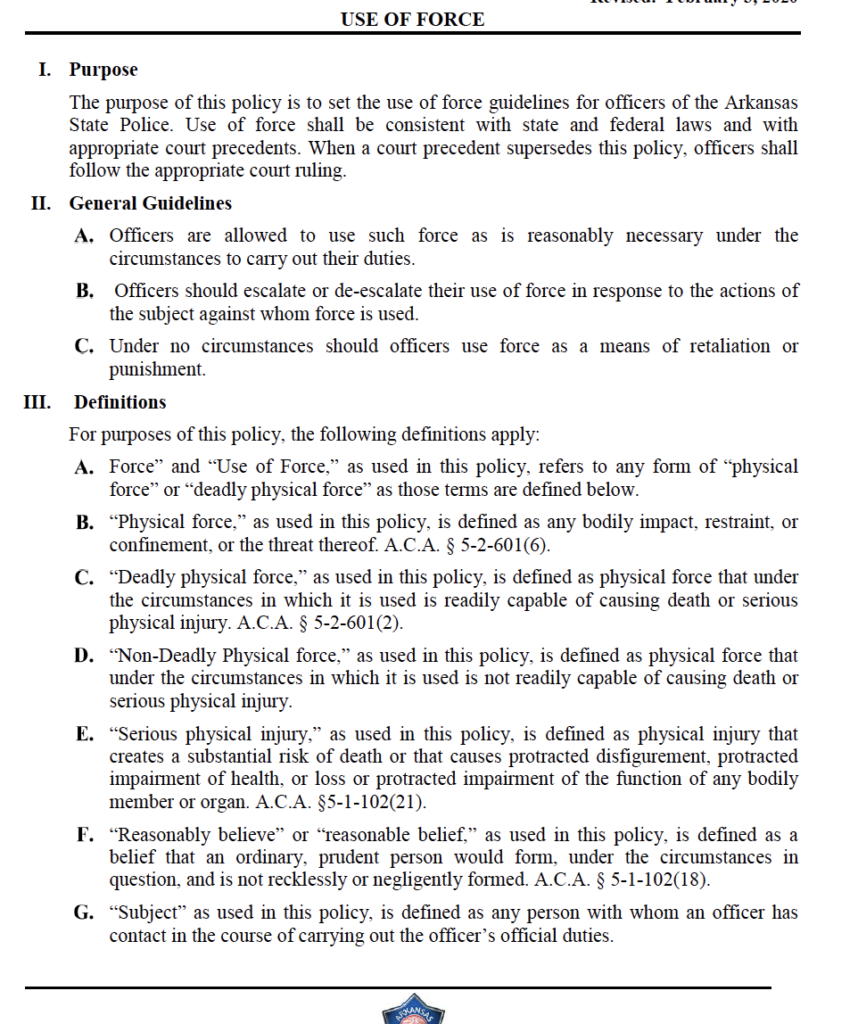
“Officers should escalate or de-escalate their use of force in response to the actions of the subject against whom force is used.” Interesting. If they are to use “such force as is reasonably necessary under the circumstances to carry out their duties,” and they are supposed to escalate only in response to the actions of the subject, it’s pretty hard to square those responsibilities with a decision to fire tear gas and PepperBall rounds at protesters who are kneeling in front of you and doing nothing that would indicate a threat or even a need for force.
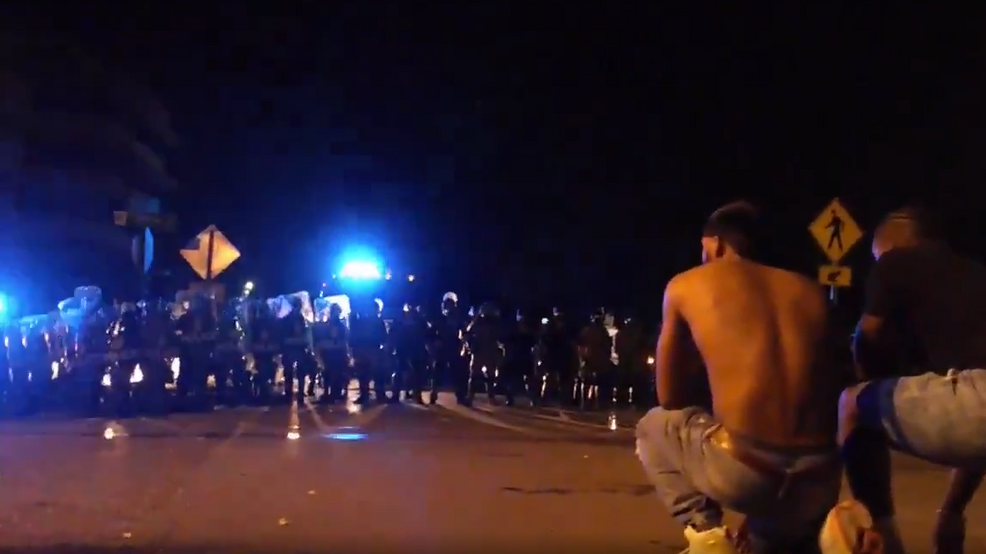
And, before anyone quibbles with the idea that tear gas and PepperBalls are a “use of force,” you should know that that is the ASP’s own definition of what constitutes Use of Force. To wit:
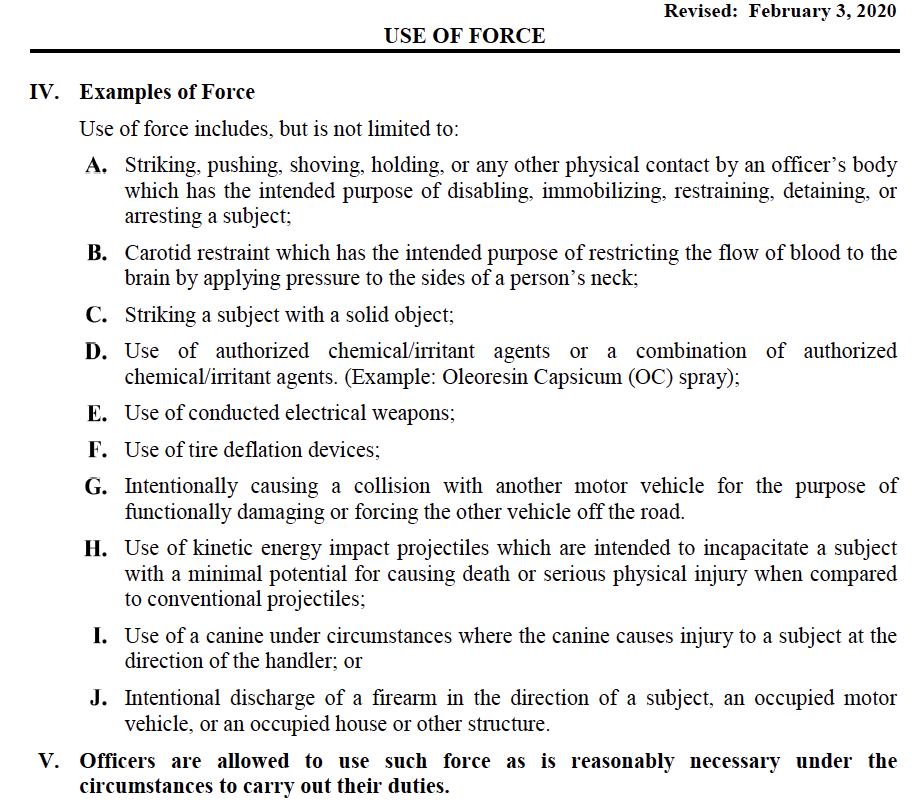
So, then, even under the ASP’s own interpretation, what the ASP officers at the Capitol have been doing since Saturday night is, unequivocally, a use of force. Let’s be generous for a moment and assume that the tear gas and PepperBalls, as used, constitute non-deadly physical force. That is a bit of a problem, as the ASP gives two specific scenarios for use of non-deadly physical force, neither of which applies here:
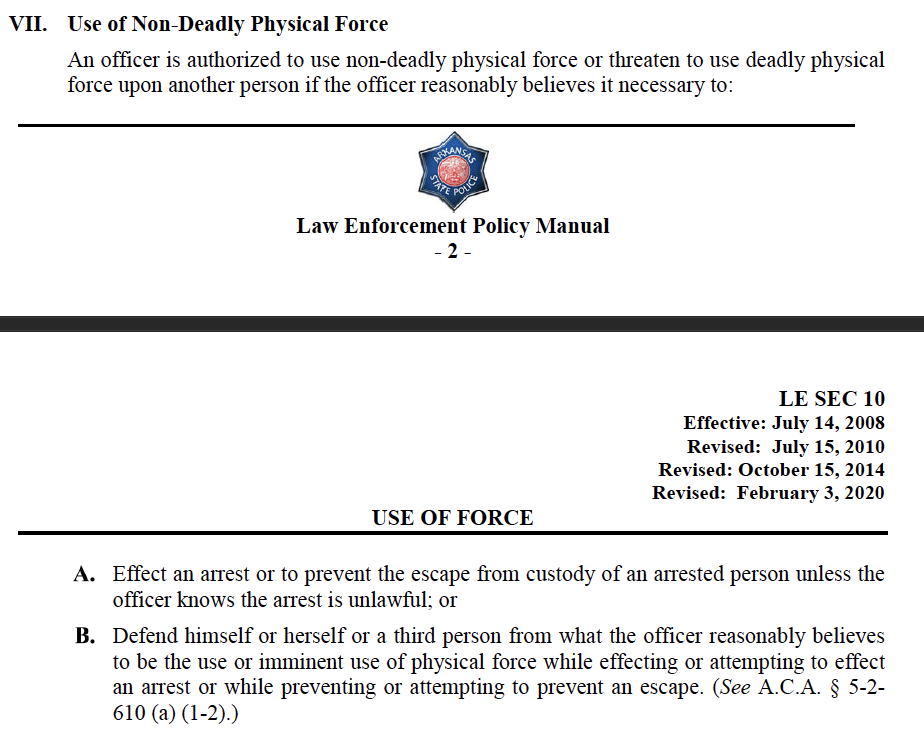
By their own admission over the LRAD, the ASP is using the gas and PepperBalls not to effectuate an arrest or to defend themselves from the use of force while effecting an arrest; they are explicitly using the gas and balls to disperse a crowd that, according to the ASP, is engaged in an “unlawful public gathering.”
Of course, whether force used is deadly or non-deadly does not turn on whether someone is killed. The ASP defines “deadly physical force” as “physical force that under the circumstances in which it is used is readily capable of causing death or serious physical injury.” You know…like shooting someone in the face with a tear-gas canister:
Protestor in Little Rock has been hit in the eye with a tear gas canister. “I think I’m blind” pic.twitter.com/TsfAzhzXzY
— Will 🧐 (@wtyandell) June 1, 2020
So, at best, it appears that we have a mix of deadly and non-deadly physical force being used, both without apparent justification or authorization under the ASP’s own rules. In both situations, the use of force is supposed to trigger certain actions and paperwork.
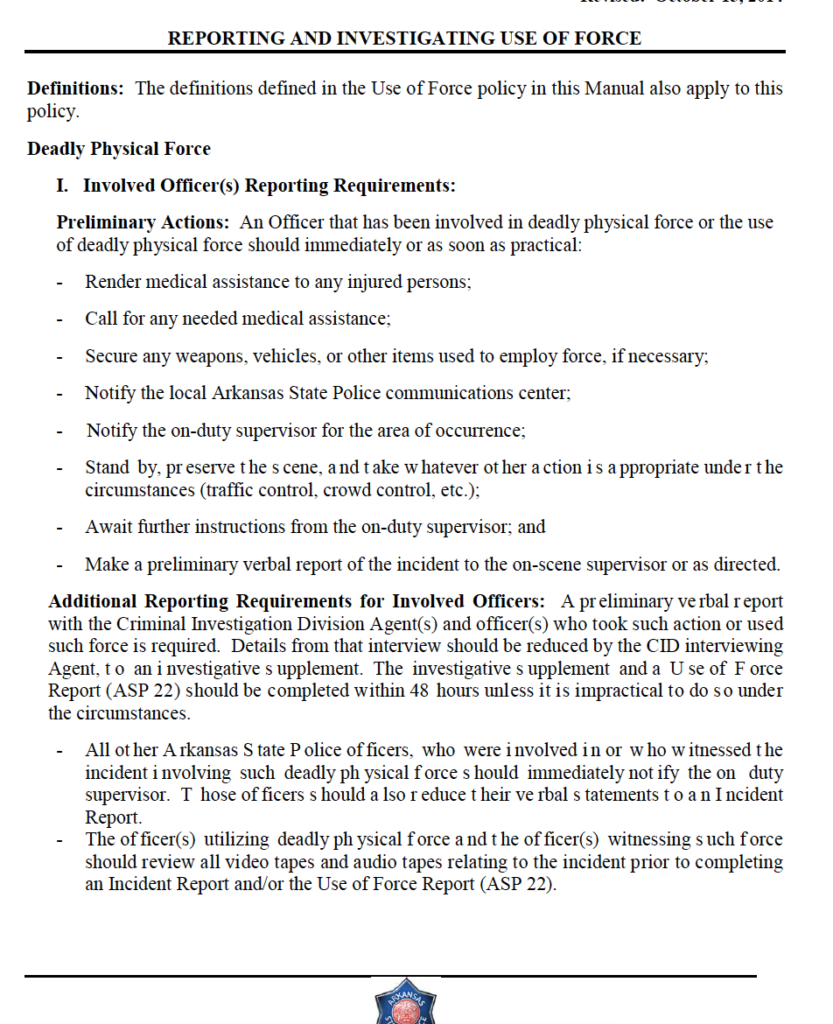
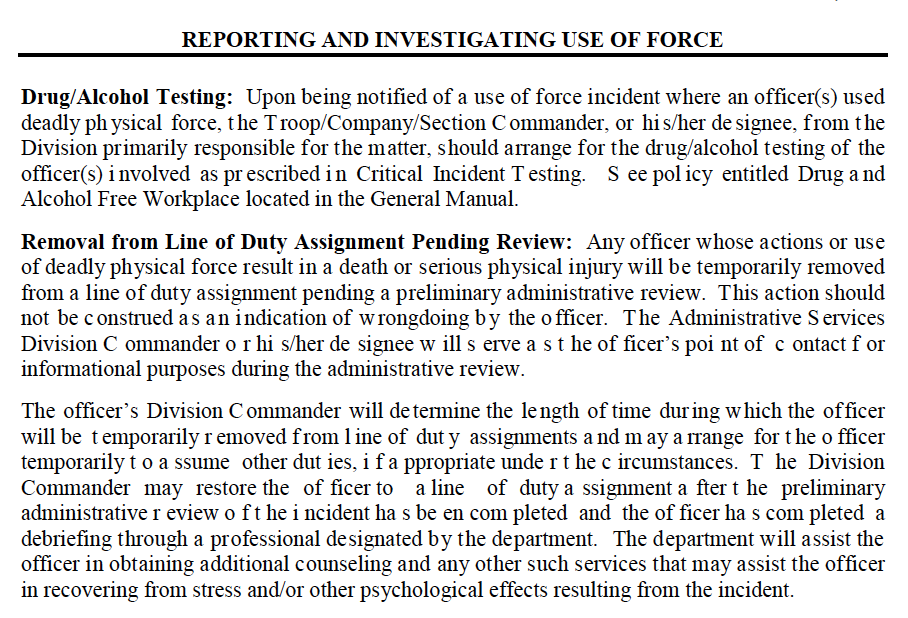

In both scenarios, the officer who uses force must immediately notify and make a verbal report of the use of force to the on-duty supervisor. The officer is then required to fill out a use-of-force form (ASP 22) “within forty-eight (48) hours unless it is impractical to complete under the circumstances.” Additionally, all of the other officers who saw the use of force are required to report it and fill out ASP 22s.
Care to guess how many ASP 22 use-of-force reports have been submitted by ASP officers since Saturday? (Hint: It is less than 1.) Worse, when I requested all use-of-force reports for the past few days, I received the following response from the ASP:
At this time, there are no use-of-force reports for the time period you reference. If any are prepared related to these events, they will go through the chain of command before they are finalized. Depending on how long all this goes on, that might be a couple of weeks.
As of the time of this writing, we are over 60 hours past the use of force that occurred Saturday night. Yet not a single use-of-force report has been submitted? What are the odds that the ASP is going to get accurate, detailed reports for individual uses of force over multiple days if the ASP officers wait until all of the protests die down before they complete any? (Hint: Again, zero.)
It is not merely in failing to report uses of force that the ASP seems to be violating agency rules, however. The Emergency Response Team (ERT) does list crowd control and responding to demonstrations as part of its duties. Yet, according to their own rules, the ERT is activated for crowd-control/demonstration purposes via a request from a law enforcement agency.
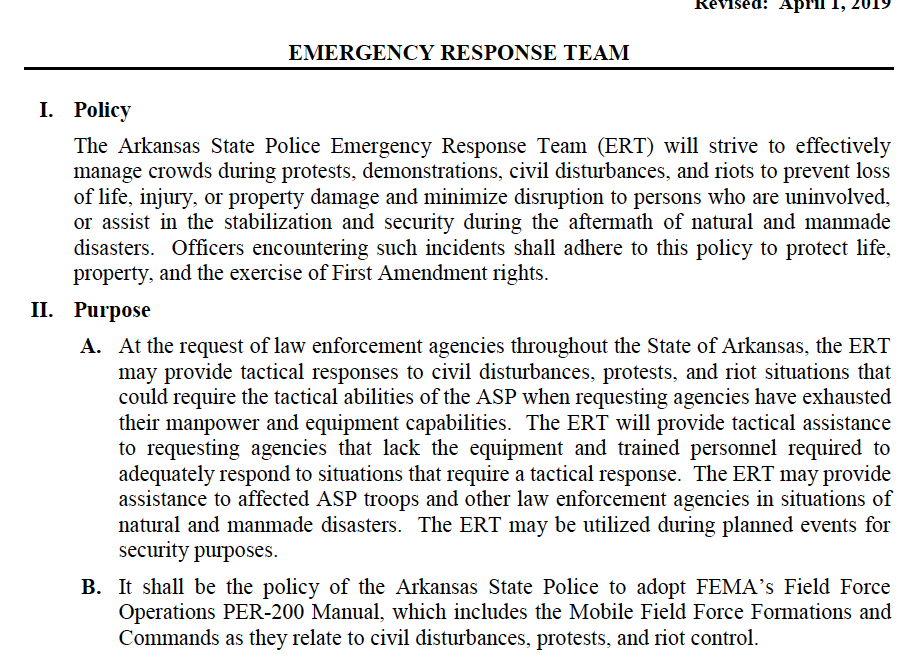
My understanding is that the ERT has been called out by the Governor, not by the Little Rock Police Department. I have submitted a FOIA request for the documentation regarding the deployment of the ERT, but that has not been received yet. (The opening paragraph to the above section also specifically notes that the ERT is supposed to protect First Amendment rights when responding. Gassing protesters who are kneeling/sitting isn’t that.)
Now, it could be that the ASP (and, by extension, the ERT) are being deployed in these instances because of a state statute,1 which makes security and safety of the Capitol grounds the jurisdiction of the Arkansas State Police. However, in that situation, unless local law enforcement had asked for help with crowd control/demonstrators more broadly, the ASP’s jurisdiction would extend only to the Capitol grounds and would be only as broad as was required to protect the Capitol property. But let’s assume that it’s the Capitol grounds that give them jurisdiction to be there in these cases. There is still a problem.
The ASP has been announcing each night, before they start firing tear gas and/or PepperBalls, that the protesters are engaged in an illegal assembly. Except, the same subtitle of the Arkansas code that delineates the powers and duties of the ASP contains a chapter on Prevention of Public Offenses, which says this:
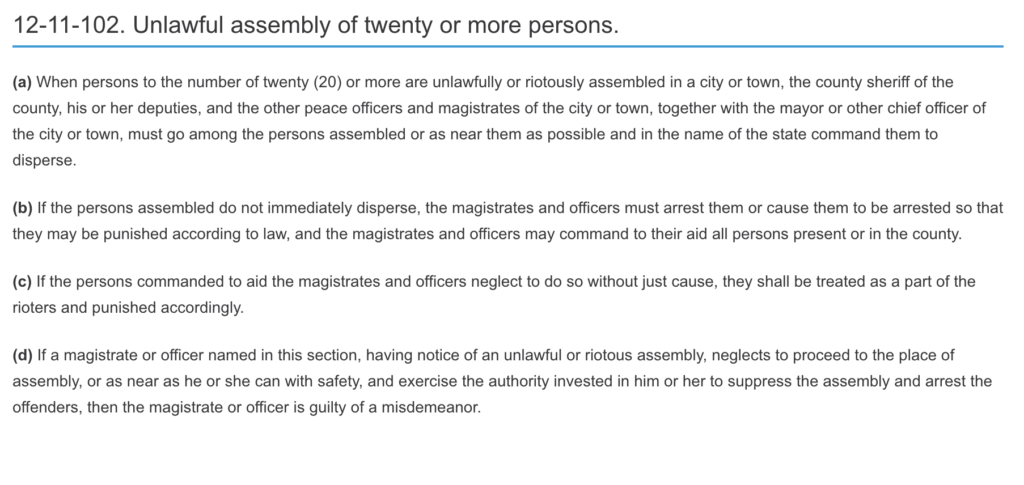
Under that statute–even if we ignore that it assumes that the county sheriff and mayor will be involved in the process–once an “unlawful assembly” of twenty (20) or more person has been told to disperse, if they don’t immediately leave, “the magistrates and officers must arrest them or cause them to be arrested.” Nowhere in that statute does it say that, if the people do not immediately disperse, the ASP can begin firing tear gas and PepperBalls at the group until they do disperse. There is no reading of “command them to disperse” that can reasonably be interpreted to mean “tell them to leave and shoot chemical irritants at them if they do not.”
Additionally, that ERT provision of the Manual shown above specifically states that ASP will use FEMA’s Field Force Operations Manual as it relates “to civil disturbances, protests, and riot control.” Yet, right there in the FEMA FFO Manual, is this:
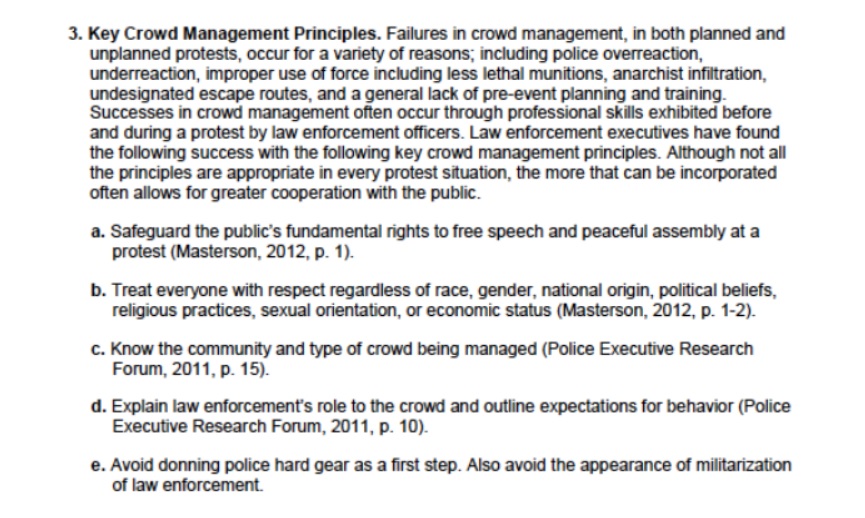
There is a lot to unpack here. Overreaction? Check. Improper use of force? Check. Safeguarding free speech? Nope. But, most glaringly, “avoid donning police hard gear as a first step. Also avoid the appearance of militarization of law enforcement”? That is literally the exact opposite of what the ASP ERT has done, despite citing to the FEMA manual in their own policies and procedures regarding riots and disturbances!
To say that Asa Hutchinson and the Arkansas State Police have handled this poorly, both in actions and in what they have said to justify those acts, is putting it mildly. People are angry about the death of George Floyd and, more broadly, police brutality against people of color. But even now, at a time when all eyes are on police and people feel like police are not held accountable, the Arkansas State Police can’t even be bothered to follow their own rules regarding interacting with crowds, use of force, use-of-force reporting, or protecting people’s rights.
Ark. Code Ann. 12-8-108↩